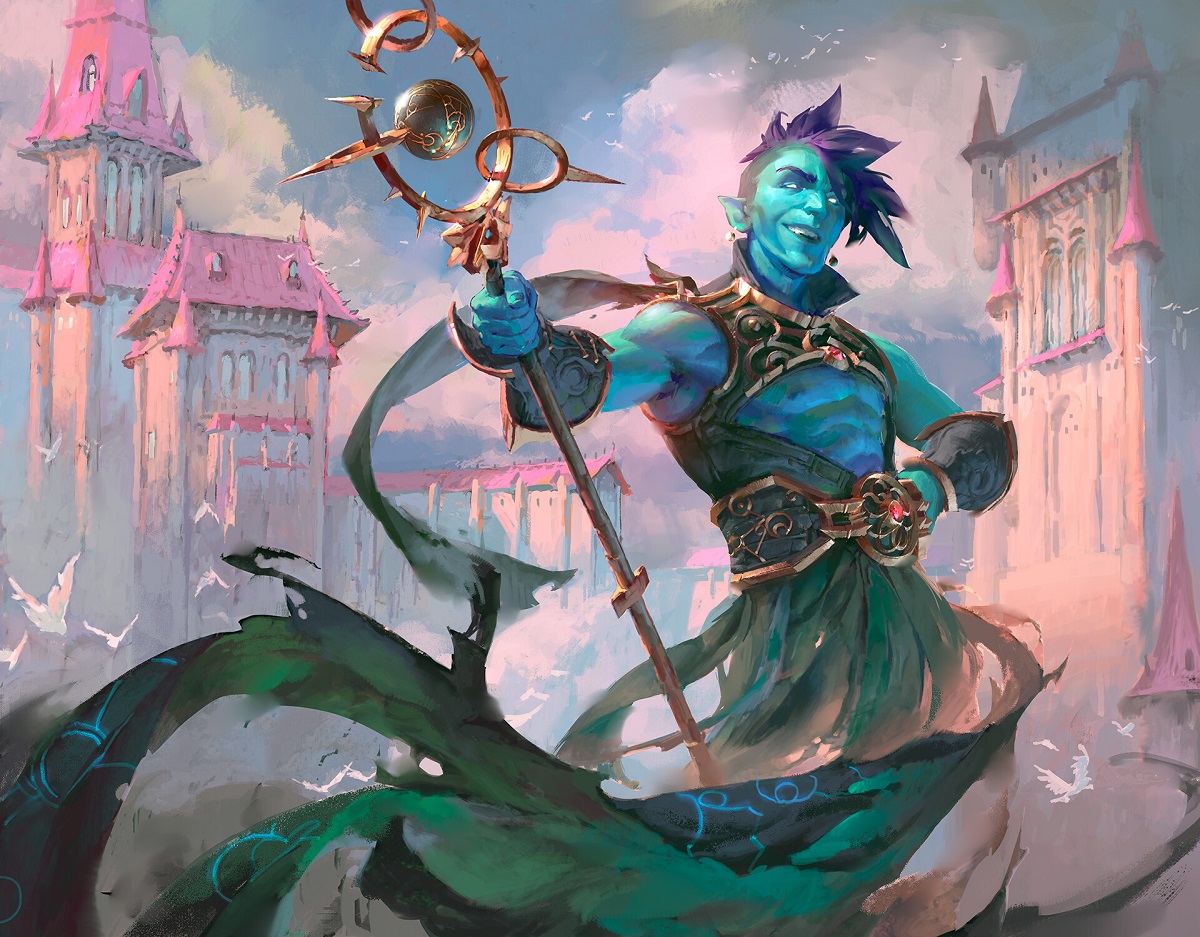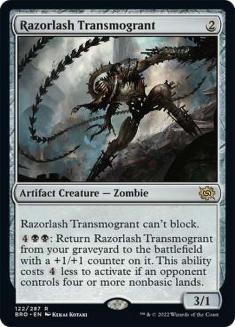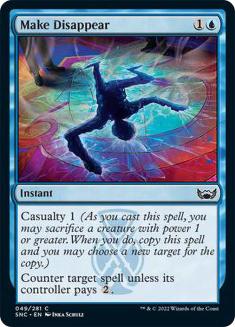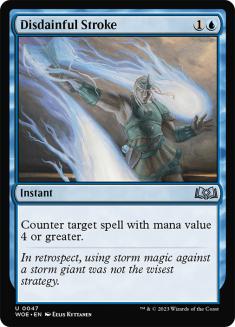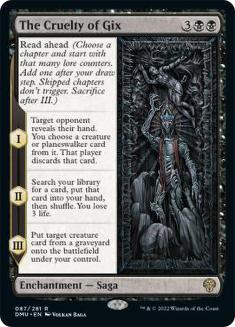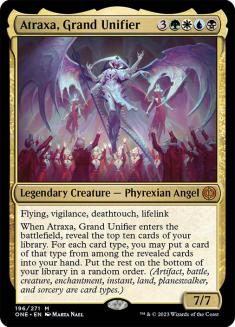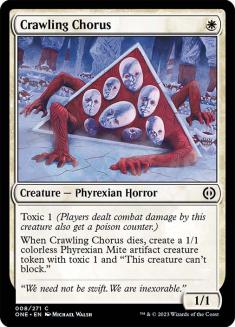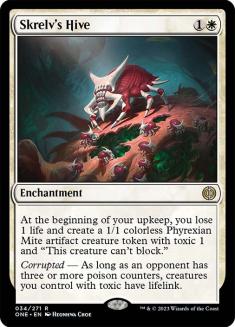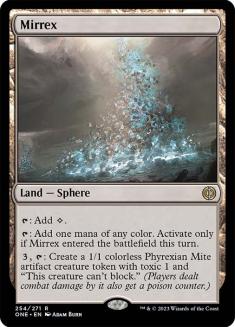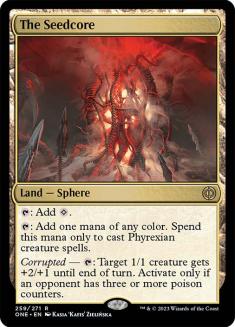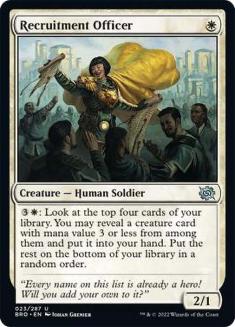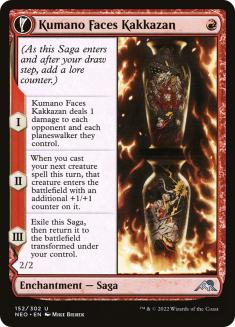This weekend marked the first time in years that many competitive Magic players had to care about Standard. Paper Standard had been off-limits during the pandemic and was suffering in most places before then. Placing it front and center in Organized Play again was a bold gamble.
Thankfully, this Standard format rose to the challenge. The early results on Magic Online (MTGO) weren’t promising, but an impressive range of decks proved their worth or came out of nowhere to capture glory.
Let’s start with the one we all saw coming.
Grixis Midrange
Creatures (11)
Lands (26)
Spells (23)

Grixis Midrange has been the consensus best deck for a long time and was an easy default choice for this weekend. It plays good, clean, midrange Magic – flexible answers and threats backed up by a seamless manabase and ways to use that mana. Depending on where you look, Grixis either underperformed expectations or reinforced them – it was one of seven different decks in the Top 8 in Japan but put five copies in the ANZ Top 8. You can’t argue with results, but what do the results tell you?
One story of the week is that players successfully adapted to Grixis in both card and deck choice – the story next week will be whether Grixis can adapt to these new threats now that they are known. The breakout sideboard card of the weekend offers a fascinating case study.
Razorlash Transmogrant
At a glance, Razorlash Transmogrant looks like the latest riff on a familiar theme – just another black 3/1 for two mana that can’t block and probably won’t get to attack either unless black aggro suddenly becomes playable again. Unlike those uninspiring comparisons, Transmogrant stole the spotlight as a midrange mirror-breaker. Grixis is full of one-for-one removal (which typically doesn’t exile its target) and small creatures that would only trade with Transmogrant in combat. If you can cancel out the other relevant resources in the game – as Grixis is built to do and as is likely in a mirror – a nigh-unkillable 4/2 can get the job done. As a recursive threat, it also pairs nicely with the rummaging from Blood tokens and Fable of the Mirror-Breaker or the casualty on Make Disappear.
Other decks quickly pounced on this trend. Esper Legends can struggle with a stream of removal picking off the one threat per turn it can present – Transmogrant flips that script.
It’s worth noting that Transmogrant is so effective in the mirror precisely because so few of the Grixis staples line up well against it. Your black aggro deck that wants to use it against Grixis will find the supporting cast shredded by Cut Down and Abrade and so on. The blue reactive cards in Grixis both pair well with Transmogrant and are weak against it. Transmogrant won’t salvage a strategy that isn’t competitive in the matchup already – and that’s before Grixis adapts with cards like Anoint with Affliction or Obliterating Bolt.
The Two-Mana Counterspells
Corpse Appraiser is nice and all, but the two-mana counterspells separate Grixis from the other black-based midrange decks that have demanded respect since the big Standard rotation last fall. Like the Temur and Grixis Energy decks in their day or the Sultai and Esper Midrange decks after them, it wasn’t hard to go over the top of these strategies, especially in pre-sideboard games – but it was a tall order once they had many cheap ways to fizzle your big finish.
Grixis now has a wider range of decks it has to fight at once. It has the tools to target any one of them if it wants to, but getting that balance right is tricky.
Grixis Reanimator
Creatures (12)
Lands (26)
Spells (22)

A group of Japanese pros showed up with a Grixis Reanimator deck that blends the Rakdos Reanimator shell with the core of good cards that makes Grixis so successful. There was a lot of overlap here anyway – why not make it easy to play like the established best deck when your unique graveyard angle is off-limits? The main gain compared to Rakdos is Corpse Appraiser, which is as solid here as in regular Grixis, but also fills your own graveyard for The Cruelty of Gix or attacks theirs if others share your enthusiasm for the deck.
I think this deck is great – I just don’t know if Atraxa can claim credit for that. The deck was on camera a lot, thanks to the prestige of its pilots, but in all those matches I don’t recall seeing a single ‘fast’ Atraxa via Cruelty. However, if you have to prepare for a more open field, there’s a lot to be said for having a powerful proactive plan. It might not matter if you have the wrong tools for a matchup if a fast Atraxa finds you four of them.
Selesnya Toxic
Creatures (27)
- 4 Bloated Contaminator
- 4 Venerated Rotpriest
- 3 Annex Sentry
- 4 Slaughter Singer
- 4 Skrelv, Defector Mite
- 4 Jawbone Duelist
- 4 Crawling Chorus
Lands (22)
Spells (11)
Sideboard

Former MPL member Rei Sato showed up to the Champions Cup Final with one goal: win the whole thing and book his seat at the World Championship. His choice of Selesnya Toxic must have prompted a victory lap for Play Design, who have watched various themed or tribal aggro decks fail to gain traction across the years.
Over two-thirds of the maindeck cards are toxic cards from Phyrexia: All Will Be One working towards a shared goal, making it look more like an ideal Limited deck than Standard’s next big thing. However, when the big hurdle for any creature deck in Standard is breaking through Grixis’s wall of removal, Turn 1 Crawling Chorus starts to look great here too.
Almost every card in the deck trades up on mana against removal, protects other cards from removal, or leaves behind at least one additional threat. Trying to keep up with a Turn 2 Skrelv’s Hive by throwing Abrades and Cut Downs at everything that moves is a losing proposition.
Selesnya Toxic gets more from its lands than the typical aggro deck. Mirrex keeps a steady stream of attackers coming, and The Seedcore ensures that you can’t just ignore these instead of interacting with them.
Ultimately, this deck’s single-minded focus is also its biggest weakness. Any card that isn’t toxic doesn’t contribute to your sole plan, and you need to draw enough threats that you can’t overload on removal to push them through. Rei Sato’s sideboard makes a cursory attempt to feint out Grixis opponents with Wedding Announcement, but the same sweepers, like Brotherhood’s End, that they will turn to anyway are also good here.
Mono-Blue Djinn
Spells (29)

Mono-Blue Djinn is the scourge of the Arena ladder and paper Standard everywhere. It’s not just a strong example of a play style that’s widely beloved, it’s a competitive deck that doesn’t demand hundreds of dollars or dozens of wildcards on lands and spells alike. Keisuke Naitou’s beautiful, all-foil Djinn deck that was still cheaper than most of his competition won the unknown Japanese player a legion of fans during his impressive run that left him a single, heartbreaking game short of Worlds.
This deck is the natural predator of anyone trying to go bigger than Grixis Midrange thanks to a bevy of counterspells, cheap threats that are easily protected, and Flow of Knowledge outmuscling any conventional form of card advantage in longer games. Normal Grixis Midrange is a fine matchup, but the Grixis Reanimator deck leaves itself much more exposed to decks like this in order to win the arms race in the pseudo-mirror.
In return, you have a natural weakness to aggressive decks trying to go faster than Grixis. Azorius Soldiers is the true nightmare matchup but had a poor showing this weekend – Mono-Red and Selesnya Toxic are tougher but a little closer.
Five-Color Control
Creatures (7)
Planeswalkers (4)
Lands (25)
Spells (24)

If you want to go big, there’s not much bigger than hard-casting Atraxa to find Herd Migration and The Eternal Wanderer. Decks like this can easily lead you astray because they can run basically anything and it’s tempting to build them to be even bigger and better, but a disciplined build of this archetype is somewhat intriguing. Centering yourself in white opens up Depopulate and Ossification, and branching out to domain adds Leyline Binding, another fantastically flexible removal spell. Winning with some mix of flashy, expensive cards is the easy part – the hard part is surviving until you can cast them, and this spread of removal makes that tantalizingly realistic.
A format that many feared would be a midrange dirge has proved to be far more after just one round of Regional Championships. With Europe and Canada taking their turn this weekend and all eyes on San Diego in a few weeks, I hope there are more developments like this to revisit here.

